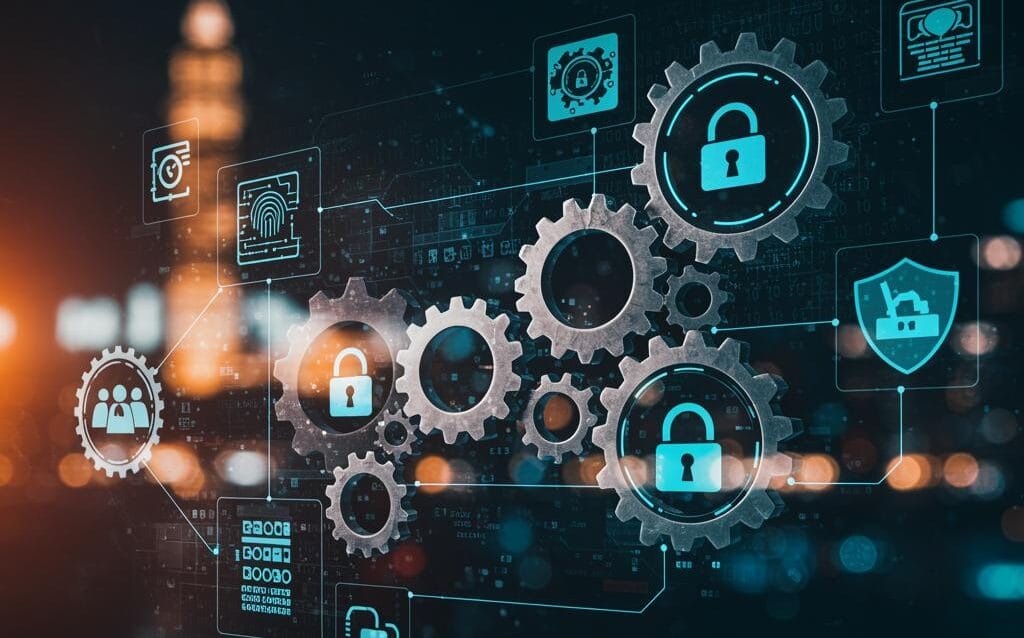Secure Software Supply Chain: Protect Your Pipeline
Secure Software Supply Chain: Protecting Your Development Pipeline
In today’s interconnected world, software development relies heavily on a complex network of components, tools, and services. This network, known as the software supply chain, is vulnerable to attacks that can compromise the integrity and security of your applications. A secure software supply chain is no longer a luxury but a necessity. This article explores the key aspects of securing your development pipeline, offering practical insights and strategies to mitigate risks.
Understanding the Software Supply Chain
What is the Software Supply Chain?
The software supply chain encompasses everything involved in creating and delivering software, from the initial code written by developers to the final deployment and maintenance. This includes:
- Open-source libraries and frameworks: These are pre-built components used to accelerate development but can introduce vulnerabilities if not managed properly.
- Third-party dependencies: Software packages and services integrated into your applications.
- Development tools: IDEs, compilers, build systems, and testing frameworks.
- Infrastructure: Cloud providers, servers, and network devices.
- Developers and contributors: The individuals involved in writing and maintaining the code.
Why is Supply Chain Security Important?
Attackers are increasingly targeting the software supply chain because it offers a single point of entry to compromise numerous downstream users. A successful attack can lead to:
- Data breaches: Stealing sensitive data from your applications and users.
- Malware distribution: Infecting users with malicious code through compromised software updates.
- Denial of service: Disrupting the availability of your applications.
- Reputational damage: Eroding trust in your brand and products.
Key Strategies for Securing Your Supply Chain
Dependency Management: Know Your Components
Effective dependency management is crucial for mitigating risks associated with open-source and third-party components. Here’s how to approach it:
- Inventory your dependencies: Create a comprehensive list of all libraries, frameworks, and packages used in your projects. Tools like Software Bill of Materials (SBOM) generators can help with this.
- Vulnerability scanning: Regularly scan your dependencies for known vulnerabilities using tools like Snyk, Sonatype Nexus, or OWASP Dependency-Check.
- Automated updates: Implement automated updates for dependencies to patch vulnerabilities promptly. However, test updates thoroughly before deploying them to production.
- Dependency pinning: Use dependency pinning to ensure that you are using specific versions of dependencies and prevent unexpected changes from breaking your application.
- Private repositories: Consider using private repositories for managing your dependencies, which allows you to control the versions and sources of the components you use.
Secure Development Practices
Secure coding practices are essential for building resilient software. Focus on the following:
- Secure coding training: Train your developers on secure coding principles and common vulnerabilities.
- Code reviews: Conduct thorough code reviews to identify and fix security flaws.
- Static analysis: Use static analysis tools to automatically identify potential vulnerabilities in your code.
- Dynamic analysis: Perform dynamic analysis (e.g., penetration testing) to identify vulnerabilities that may not be apparent during static analysis.
- Input validation: Implement robust input validation to prevent injection attacks.
- Authentication and authorization: Use strong authentication and authorization mechanisms to protect sensitive data and functionality.
Secure Build Pipeline
The build pipeline is a critical part of the software supply chain and must be secured to prevent tampering.
- Secure build environment: Use a secure build environment that is isolated from the development environment.
- Automated builds: Automate the build process to ensure consistency and prevent manual errors.
- Code signing: Sign your code to verify its authenticity and integrity.
- Artifact management: Use an artifact repository to store and manage your build artifacts.
- Immutable infrastructure: Use immutable infrastructure to prevent unauthorized changes to your build environment.
Access Control and Least Privilege
Implementing strong access control is vital to preventing unauthorized access to your development pipeline.
- Principle of least privilege: Grant users only the minimum access they need to perform their job duties.
- Multi-factor authentication (MFA): Enforce MFA for all accounts that have access to sensitive systems and data.
- Regular access reviews: Regularly review user access rights and revoke access that is no longer needed.
- Role-based access control (RBAC): Implement RBAC to simplify access management and ensure consistency.
Monitoring and Incident Response
Continuous Monitoring
Proactive monitoring is essential for detecting and responding to security incidents in a timely manner.
- Log analysis: Collect and analyze logs from all systems in your development pipeline.
- Security information and event management (SIEM): Use a SIEM system to correlate security events and identify potential threats.
- Intrusion detection systems (IDS): Deploy IDS to detect malicious activity in your network.
- Vulnerability management: Continuously scan your systems for vulnerabilities and prioritize remediation efforts.
Incident Response Plan
Having a well-defined incident response plan is crucial for effectively handling security incidents.
- Identify key stakeholders: Define the roles and responsibilities of individuals involved in incident response.
- Establish communication channels: Create clear communication channels for reporting and coordinating incident response activities.
- Develop incident response procedures: Document the steps to be taken in response to different types of security incidents.
- Test your incident response plan: Regularly test your incident response plan to ensure its effectiveness.
Conclusion
Securing your software supply chain is an ongoing process that requires a layered approach. By implementing the strategies outlined in this article, you can significantly reduce the risk of supply chain attacks and protect your applications, data, and reputation. Remember to continuously assess and improve your security posture to stay ahead of evolving threats. Prioritize security at every stage of the development lifecycle and foster a security-conscious culture within your organization. Investing in software supply chain security is an investment in the long-term success and resilience of your business.

